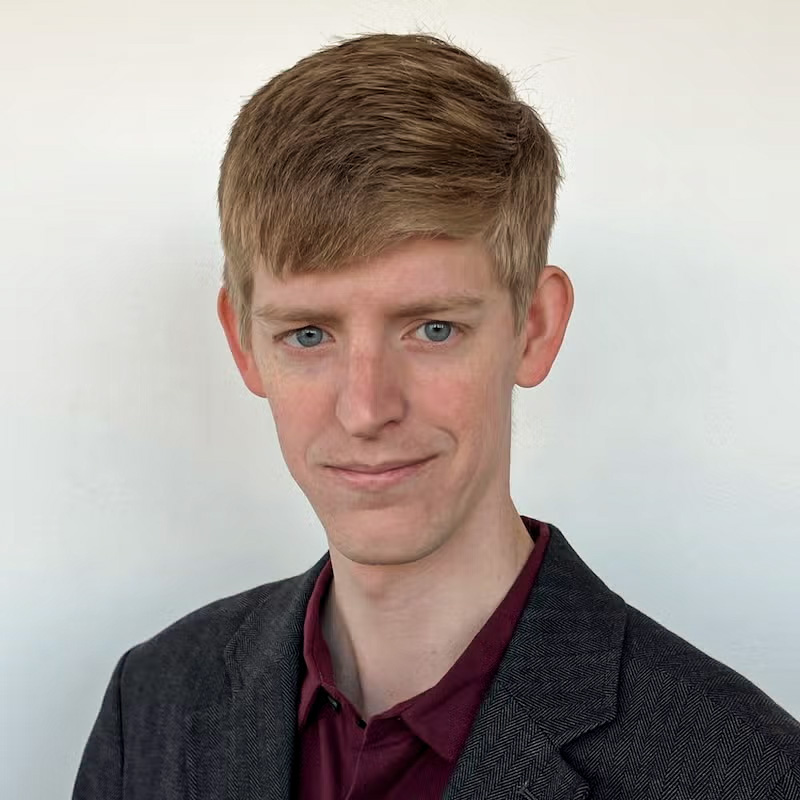
In recognition of his selection by The Association of Former Students to Texas A&M's 12 Under 12, we caught up with Dr. Austin Baty '13 to learn more about his journey from undergraduate research at the Texas A&M Physics and Astronomy Department to leading a nuclear physics group at the University of Illinois Chicago.
Baty's career has taken him from writing a thesis in the TAMU accelerator lab to earning a Ph.D. at MIT, collaborating with thousands of physicists at CERN, and now mentoring students and conducting high-impact nuclear research. We asked him to reflect on his time at Texas A&M, how it shaped his trajectory, and what advice he'd offer to the next generation of scientists.
What follows is a glimpse into his journey — and valuable perspective from someone who has applied what he learned at TAMU on a global stage.
Dr. Austin Baty ’13 still remembers the pull of Aggieland.
"My sister, who is a few years older than me, went to TAMU," Baty recalls. "My family made the drive to College Station quite a few times and that let me get a feeling for the campus and culture."
As a high school senior weighing his options, Baty saw real opportunity in the Texas A&M Physics & Astronomy Department — and the momentum it was building.
"The Mitchell Physics Building was under construction at the time and slated to open my freshman year, so I knew there would be brand new facilities for the physics department," he said. "I would be remiss to also mention there was the financial component to things: TAMU offered a high quality of education at a (relatively) affordable tuition rate. All these considerations added up to the final decision to attend TAMU."
"A&M certainly set me up for success," Baty said. "Naturally, there was the academic component — the classes were rigorous and taught me everything I needed to know in order to be prepared for graduate school and my future career in physics."

Beyond the classroom, it was the department’s hands-on research opportunities that helped Baty discover what kind of physics truly inspired him.
"Perhaps less obvious are the opportunities afforded to me by the physics department to explore what physics research looks like, and what types of physics research interested me," he said. "While I was a student, I joined a lab searching for dark matter, and later the TAMU accelerator laboratory, where I wrote my undergraduate thesis."
"These opportunities taught me how being a student is different than being a professional physics researcher, and let me explore what types of research were a good fit for my personal interests," he continued. "While at TAMU, I learned that I really enjoy working with large computing systems and massive datasets, which is now what I do every day."

That clarity proved essential as Baty advanced through graduate school at MIT and went on to contribute to research at CERN — home to the world’s largest particle accelerator. Today, as an assistant professor at UIC, he leads a research group of about 15 students and postdocs, helping them develop the same foundational understanding he once sought at A&M.
Still, not all of Baty’s favorite memories are tied to labs and lectures.
"There are a lot of small interactions from those years that give me a great sense of nostalgia," Baty said. "But if I had to pick one 'major' memory it would be TAMU beating Nebraska 9–6 in the last football home game in 2010. The crowd rushed Kyle Field after the game was over, and there was really just an incredible sense of camaraderie in the student section."
Now several years removed from his time in College Station, Baty offers thoughtful advice to students coming of age in an era of constant digital noise and comparison.
"We now live in a hyper-connected, fast-moving world," he said. "I see a lot of people comparing themselves to other people on social media, in the news, etc., and this makes it very easy to get discouraged and distracted from your own personal goals."
"I would tell people to not focus too much on how you stack up versus others; compare yourself to where you were a few years ago. If you are making progress towards your own goals, be proud of that."
"Conversely, if you think there are areas that need improvement, think critically about how you can change your habits to do better. My point is that I think it is much more productive to do this process through self-reflection rather than by using external comparisons to other people that have different circumstances, different opportunities, and different challenges."
Whether in the lab, the classroom, or the student section at Kyle Field, Dr. Austin Baty’s story is a testament to curiosity, commitment, and the lasting influence of a Texas A&M physics education.
Continue exploring with a related story from the College of Arts & Sciences: "Three Arts And Sciences Graduates Named To 12 Under 12 Cohort For 2024"
